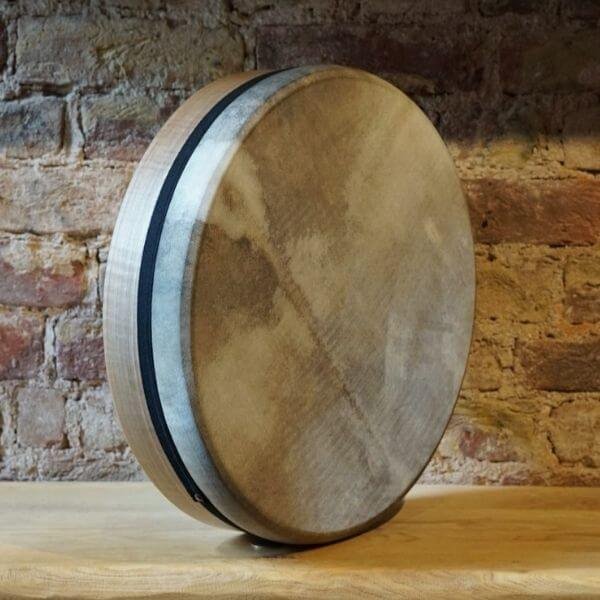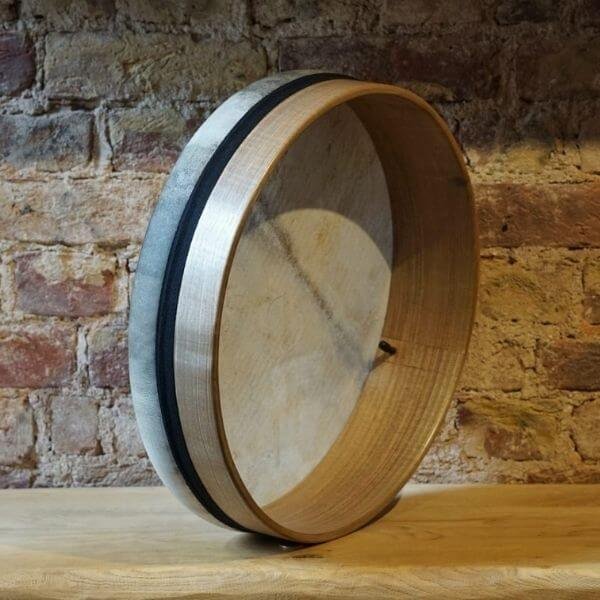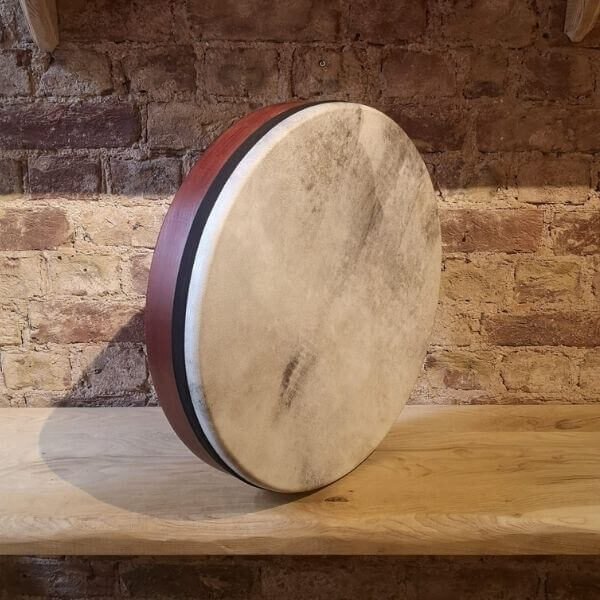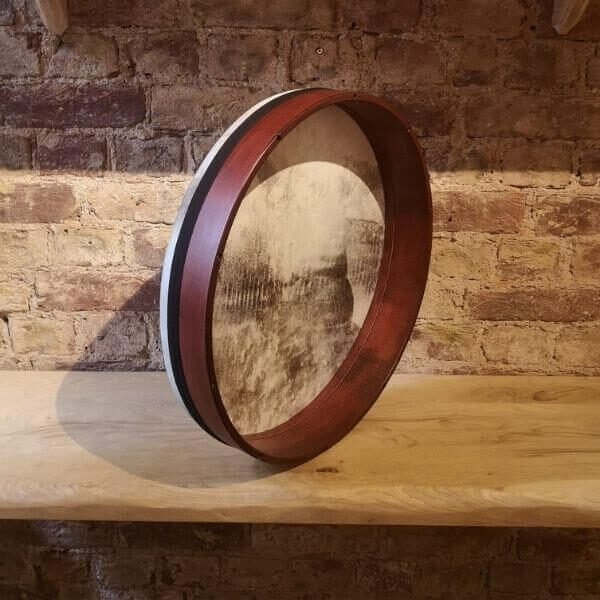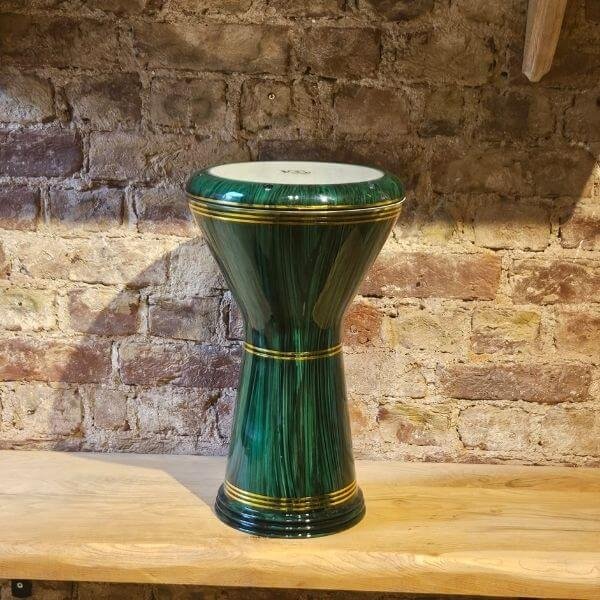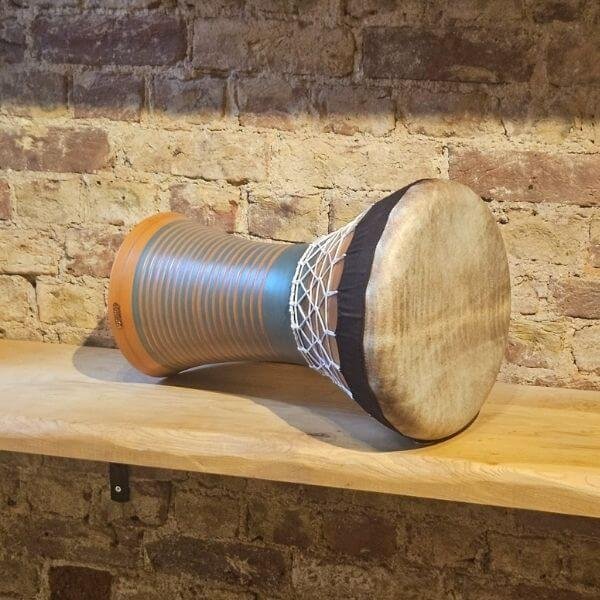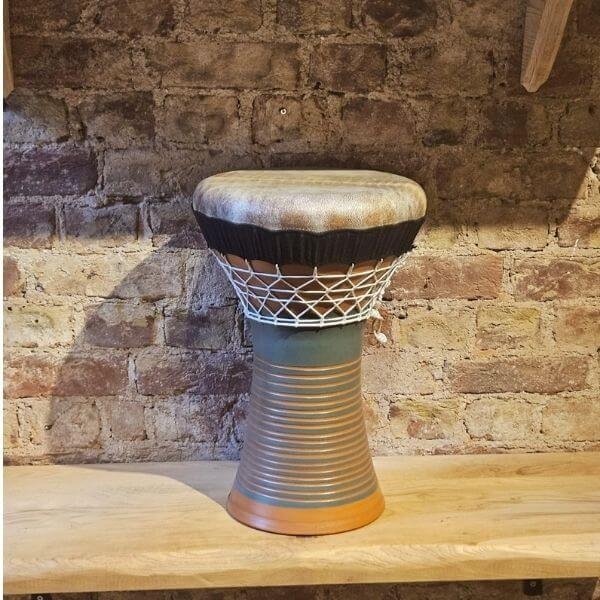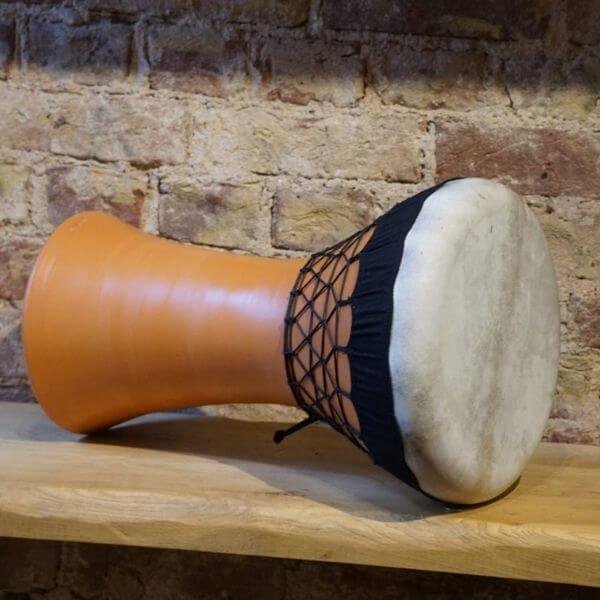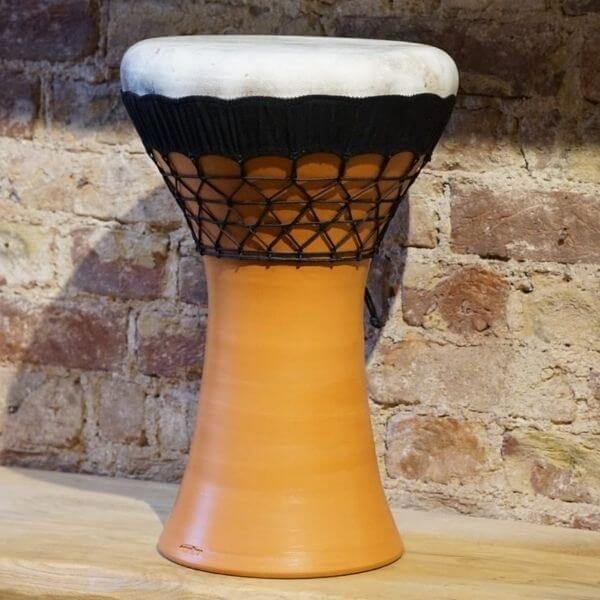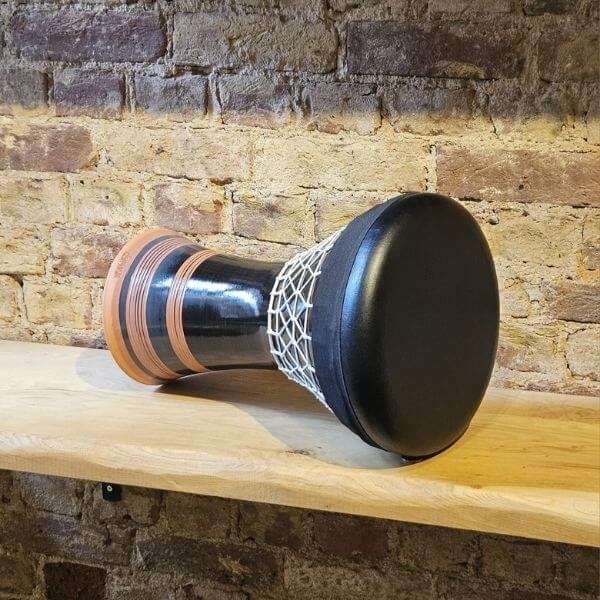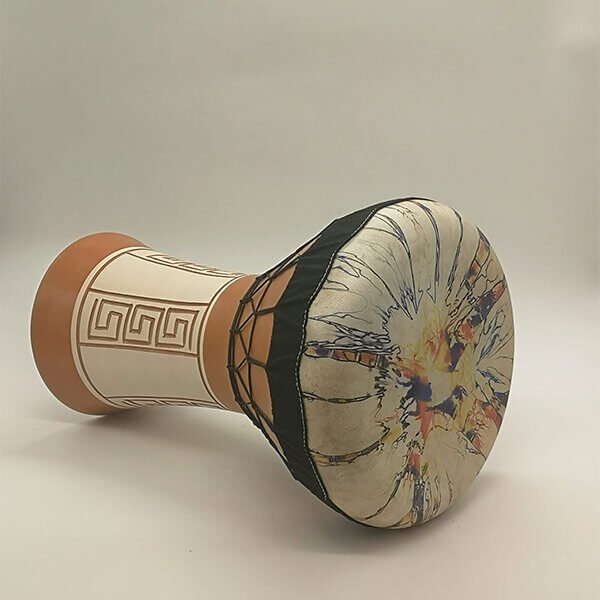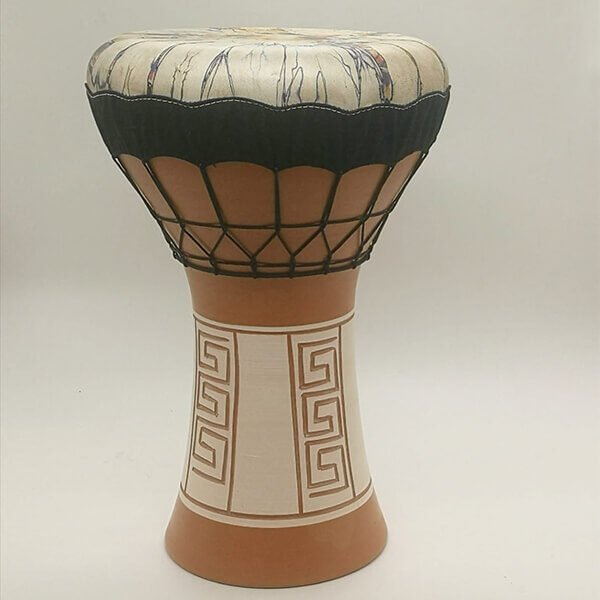Clay darbuka (ceramic darbuka) has a deep natural sound as clay is used in the goblet shaped body and natural skin is used at the top of the instrument. Widely used skins in clay darbuka are fish, goat and cow. As the skin is natural, the skin head is sensitive to humidity. Clay darbuka players heat the skin head before the performance for tuning.
Fish skin topped clay darbuka has a high frequency sound with a great resonance. It is preferred by professional percussionists to perform on stage and for recording.
Goat skin is widely preferred in Turkey, particularly in mid bass and doholla darbukas. Goat skin is strong and has good endurance in humidity. Goat skin topped clay darbuka has a good variety of high frequency and bass sounds.
Cow skin is very similar to goat skin in character and is a thick skin. This brings further endurance to cow skin topped clay darbukas.
There are 3 commonly accepted sizes of clay darbuka: solo darbuka, mid bass darbuka and bass darbuka (dohollo).



